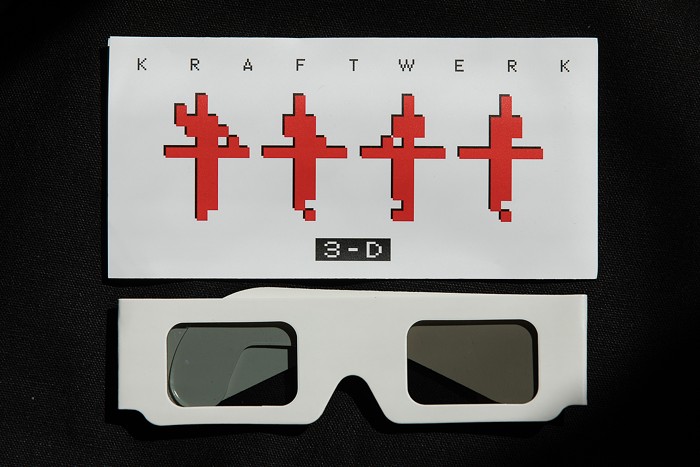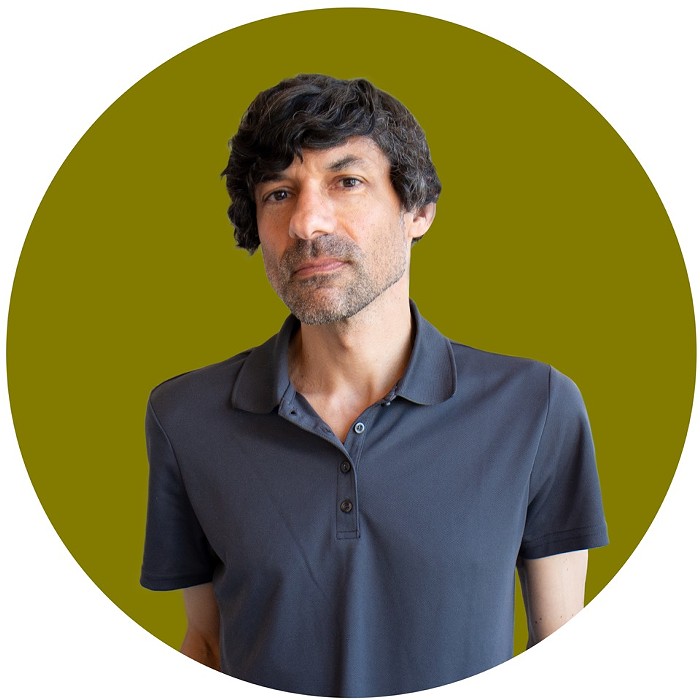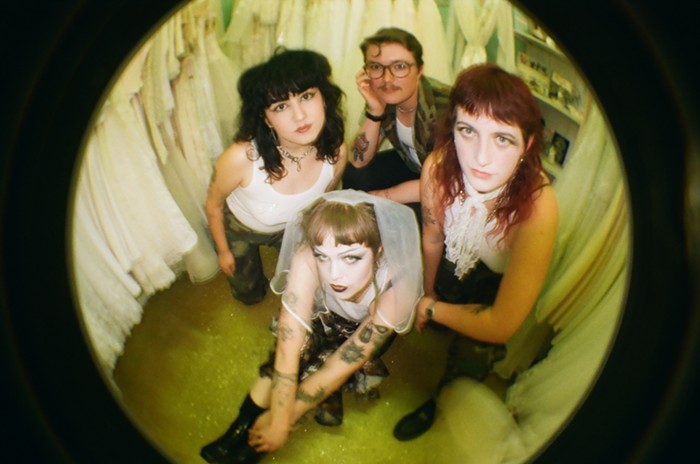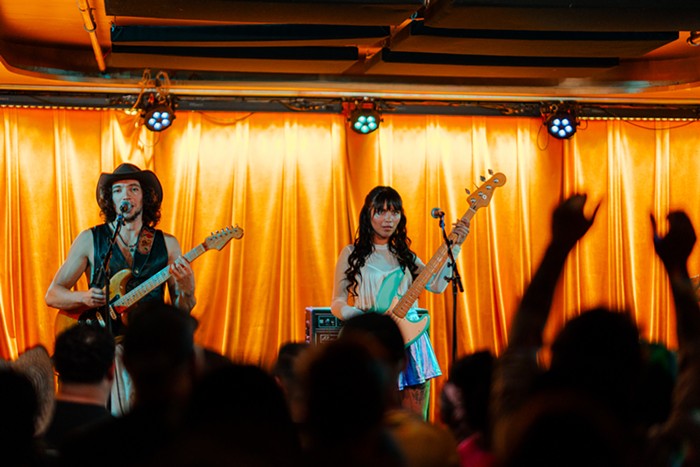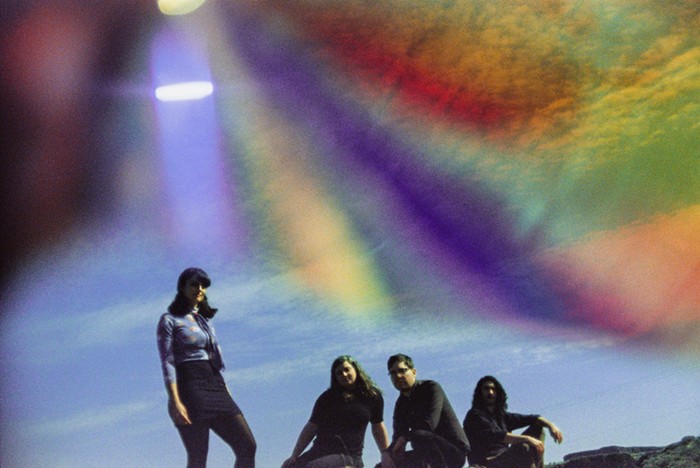For most of the 21st century, electronic-music pioneers Kraftwerk have been burnishing their influential back catalog, reissuing titles and reproducing their hits and fan faves on occasional tours, with reverence for the blueprints. But the catch is, Ralf Hütter—Kraftwerk's lone surviving original member—only recognizes Kraftwerk's output from 1974's Autobahn onward. Consequently, he infamously ignores some of their most interesting work, from 1970's Tone Float (as Organisation) through 1973's Ralf und Florian. (I touch on that maddening topic here and here.) While it would be difficult to perform the flute-heavy “Ruckzuck” from Kraftwerk's debut LP—especially without the late Florian Schneider-Esleben—songs from Ralf und Florian could definitely fit into Kraftwerk's current schematics. But they've memory-holed that classic, and that's that. Might as well try to bike in the ocean as hear anything from those early years.
So it goes for this latest 3D tour (perhaps the group's last), which drew faithful old-timers and pre-teen neophytes and many geeks in-between to the Paramount on Saturday night. These aging German technicians have their shtick down to a science, and, ergo(nomically), the show ran smoothly and efficiently for 125 minutes. I expected zero surprises, as I've seen Kraftwerk in 2004 at the Paramount and in 2008 at Coachella. The setlist for all of these gigs largely has been the same, as has been the charisma-free stage presence and bank-teller setup. But in 2022, Düsseldorf Übermensch Hütter shocked this long-time follower... by scratching his temple once during “Airwaves” and moving his right leg in time to the beats of “Boing Boom Tschak.” Aha! Busted! Kraftwerk are human after all! How disappointing!

Realizing that they're about as fun to watch as accountants filing taxes, Kraftwerk—dressed in their trademark grid-bedazzled jumpsuits and standing as close to motionless as inhumanly possible behind their lecterns—let the visuals do the heavy entertainment lifting. And while they were often spectacular, they also were bang-on-the-nose, especially during “The Model” and “Tour de France.” The 3D glasses that everyone received did slightly enhance said visuals, especially during “Space Lab,” but there were no truly mind-blowing effects—unless I got a defective pair of specs.
Now, Kraftwerk had done a herculean amount of innovating in the '70s and '80s with the freaky experimental rock of Kraftwerk and Kraftwerk 2, the proto-synth-pop records Ralf und Florian, Autobahn, and Radio-Activity, the proto-techno opuses Trans-Europe Express and The Man-Machine, and the electro blueprints Computer World and “Tour de France.”
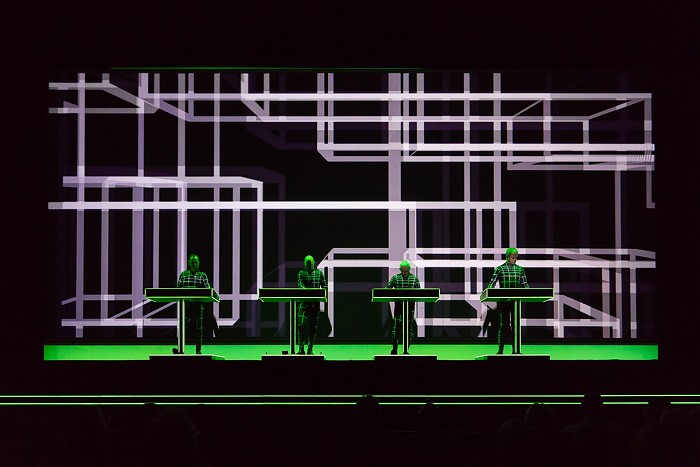
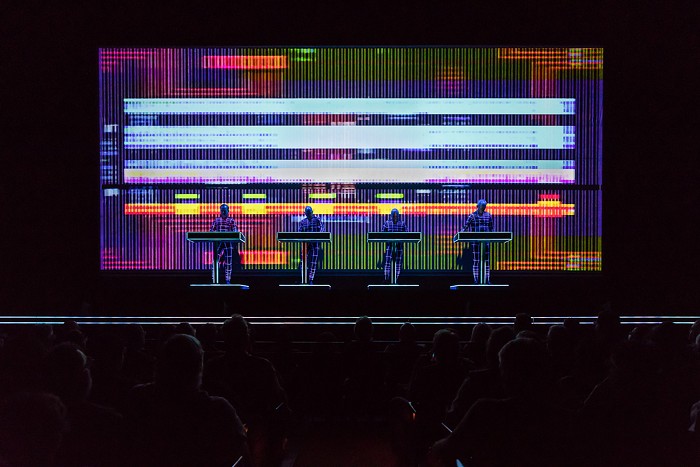
Undoubtedly, Kraftwerk have earned the right to coast in the peloton this late in the race. But here's the thing: Even if you know exactly where these dear, foundational tracks are going to go—by now you likely have their stately melodies and precision-tooled rhythms indelibly stamped in your DNA—they refuse to sound obsolete. The droids built these tracks to last—and to be studied in universities, for as long as civilization lasts.
Kraftwerk wisely began the show with “Numbers,” the funkiest cut ever created by Europeans, its stiffness and spaciness defying all logic and gravity. The first wave of Detroit techno producers and the dancers on the Motor City's version of Soul Train, The Scene, will vouch for this. Then, as the heavenly melody of “Computer World” hovered above those clipped, percolating beats, one couldn't help wondering: WHY DID THE PARAMOUNT MAKE THIS A SEATED SHOW?! Sure, the crowd skewed gray and paunchy, but still... Kraftwerk's music is about movement, literal and figurative, for Florian's sake. Do the words “Autobahn” and “Trans-Europe Express” mean nothing to the powers that be here?
Anyway, as we audience members fidgeted in our seats, we could laser focus on how Kraftwerk and whoever was working the console had dialed in the sound to an immaculate crispness, with the volume just right. The beats in “It's More Fun to Compute” ker-chinged like antique cash registers; the bass in “The Man-Machine” vibrated sternums; the bleeps in “Pocket Calculator” were practically visible... Every detail was magnified and crystalized. We got our money's worth in that department.
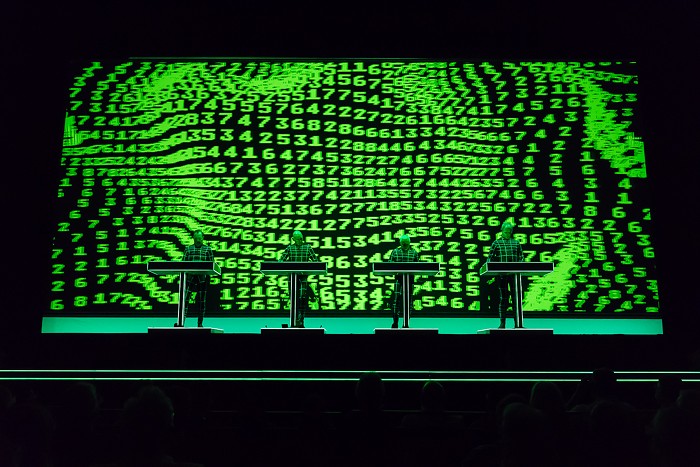
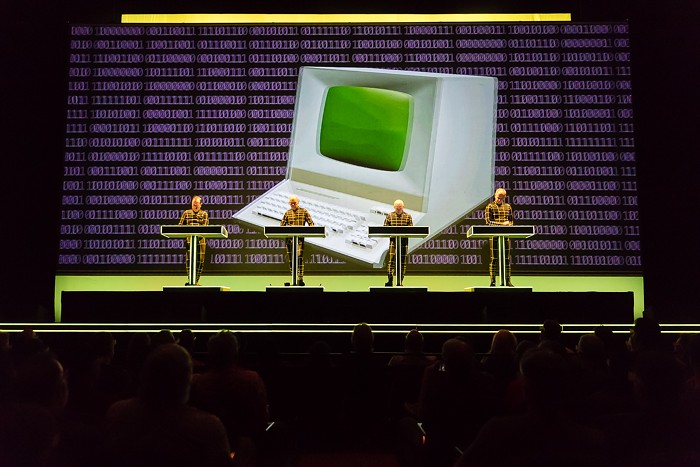
Compared to the other times I'd seen Kraftwerk, this set featured more deviation from their canonical texts. Of course, Ralf and company are far from freewheeling improvisors, but they did alter some tracks enough to make long-time fans realize that they weren't just faxing in this performance. “Airwaves” sounded more disco-fied than its original incarnation, with the angelic melody coming off as less celestial. The “Stairway to Heaven” of synth pop, “Autobahn” was truncated out of necessity and Ralf's voice sounded oddly Auto-Tuned. “Computer Love” seemed more hypnotic and flexed a strange and wonderful percussion break not heard in the original.
For “Radio-Activity,” which might be Kraftwerk's most brilliant fusion of beauty and ominousness, Hütter added names of places that had suffered the ill effects of radiation since the song's 1975 debut. “Pocket Calculator” boasted some impressive synthesizer extemporizing, and Ralf sang in his jauntiest voice. The “Non Stop”/“Boing Boom Tschak”/“Music Non Stop” medley sounded slower and funkier than on record. After doing “The Robots,” Kraftwerk exited the stage and their robot counterparts appeared, dancing with aptly creaky joints and electrified shudders. One woman libidinously screamed at this display, resulting in the evening's funniest moment.
As I filed out of the venue and into the lovely summer night with that memory reverberating, I couldn't help imagining how many groupies Hütter and his fellow sex machines Fritz Hilpert, Henning Schmitz, and Falk Grieffenhagen would attract afterward.
View the setlist here.
